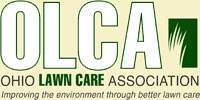How To Recover From Chinch Bug Damage

Maintaining a vibrant green lawn during the summer can be a challenge due to increased temperatures and potential drought conditions. However, with the right care and strategies, you can ensure your lawn stays healthy and lush throughout the season. Here’s a comprehensive guide to summer lawn care, including proper mowing, watering, and fertilization practices, as well as tips for handling common summer stressors.
Mowing
Keeping your lawn a bit longer in the summer helps protect it from the scorching heat. Taller grass provides shade to the roots and helps retain soil moisture, reducing the stress from heat.
- Aim to keep your grass about 3-4 inches tall during the hottest months.
- Mow regularly but never remove more than one-third of the grass blade in a single mowing to avoid shocking the grass.
Watering
Proper watering is critical during the summer. The goal is to encourage your grass to develop deep roots which will help it access water stored deeper in the soil, making it more drought-resistant.
- Early morning is ideal, as it allows the water to soak deep into the soil without too much excess water lost to evaporation.
- Generally, lawns need about 1 to 1.5 inches of water per week, from rainfall or irrigation. Water deeply and infrequently to promote root growth.
Fertilization
Using the correct fertilizer is crucial during the summer months. Summer-specific fertilizers can help strengthen your lawn against the stress caused by heat and foot traffic.
- Look for products that are rich in potassium and have slow-release nitrogen.
- Avoid over-fertilizing, which can burn the lawn. Follow the manufacturer’s instructions for the best results.
Addressing Summer Stressors
Summer brings specific challenges such as high temperatures, potential drought, and increased lawn activity. Here are some tips to help your lawn stay healthy:
- Mulching: Leave grass clippings on the lawn after mowing to help retain moisture and provide nutrients.
- Aeration: Consider aerating your lawn to improve oxygen circulation and water penetration, especially if the soil is compacted.
- Foot Traffic: Try to reduce the amount of foot traffic on the lawn during hot days, as this can stress the grass and compact the soil.
Safeguarding Your Lawn from Common Summer Pests and Diseases
Summer can stress your lawn with issues like brown patches, fungal diseases, and insect infestations. Understanding these common problems, their causes, and implementing effective prevention and treatment strategies are crucial for maintaining a lush, green lawn.
Brown Patches and Fungal Diseases
- Causes: Fungal diseases like Rhizoctonia (brown patches) and powdery mildew thrive in hot, humid conditions, often exacerbated by prolonged moisture on the grass.
- Prevention: Ensure good drainage, avoid evening watering, and promote air circulation by regular mowing. Water your lawn deeply but infrequently in the morning to minimize nighttime moisture.
- Treatment: Use fungicides appropriate for the specific fungal issue and adjust landscaping practices to reduce shade and improve soil and grass health.
Insect Infestations: Grubs and Chinch Bugs
- Causes: Grubs damage grass by eating roots, leading to easy-to-pull-up turf, while chinch bugs suck sap from grass blades, causing yellowing and browning.
- Prevention: Apply preventive treatments like grub control products early in the summer and maintain healthy, hydrated grass to deter chinch bugs.
- Treatment: For active infestations, use targeted insecticides or introduce natural predators like nematodes. Reassess watering and fertilization schedules to strengthen the lawn’s natural defenses.
Summer Care for Different Grass Types in Ohio
In Ohio, where Kentucky bluegrass, perennial ryegrass, tall fescue, and fine fescue are the most common turfgrass species, understanding the specific needs of each type is crucial for maintaining a healthy lawn during the summer months. Here’s how to tailor care for these grasses and integrate sustainable practices:
Kentucky Bluegrass
- Mowing Height: Maintain at about 2.5 to 3.5 inches. This height helps shade the roots and retain soil moisture.
- Wtering Frequency: Water deeply and infrequently, about 1 to 1.5 inches per week, to encourage deep root systems and resilience against drought.
- Fertilization: Use a balanced, slow-release fertilizer in early summer to promote healthy growth without excessive nitrogen that can lead to disease.
Perennial Ryegrass
- Mowing Height: Keep this grass cut to about 2 to 3 inches to protect it during the hot summer months.
- Watering Frequency: Perennial ryegrass benefits from consistent moisture, especially during dry spells, so water it approximately 1 to 1.5 inches per week.
- Fertilization: Apply a fertilizer with a moderate amount of nitrogen and higher potassium to enhance stress tolerance and disease resistance.
Tall Fescue
- Mowing Height: This durable grass should be kept at a height of about 3 to 4 inches to help it withstand summer heat and stress.
- Watering Frequency: Tall fescue has deep roots, so ensure it receives deep, infrequent waterings that total about 1 to 1.5 inches of water per week.
- Fertilization: Fertilize in early summer with a product that is high in slow-release nitrogen to support its growth without causing burn.
Fine Fescue
- Mowing Height: Maintain fine fescue at 2.5 to 3.5 inches as it prefers slightly shadier and cooler conditions.
- Watering Frequency: This grass type is relatively drought-tolerant but should receive about 1 inch of water per week during dry periods to prevent stress.
- Fertilization: Use a low-nitrogen, slow-release fertilizer to maintain its health without promoting excessive growth, which can lead to stress.
Hire a Professional Lawn Care Company.
Your lawn is the calling card of your home. If you live in the Hudson, OH area, Portage Turf Specialists offer the perfect lawn care services to manage your turf. We proudly serve Hudson, Ravenna, Peninsula, Macedonia, and surrounding areas with year-round lawn services.
If you could use more time for the important things in life, get started by calling (330) 296-8873 today. We look forward to serving you a greener, thicker, and more naturally better lawn with our industry-leading services.





